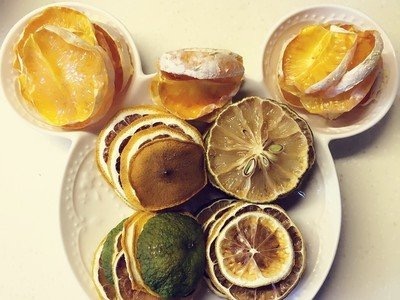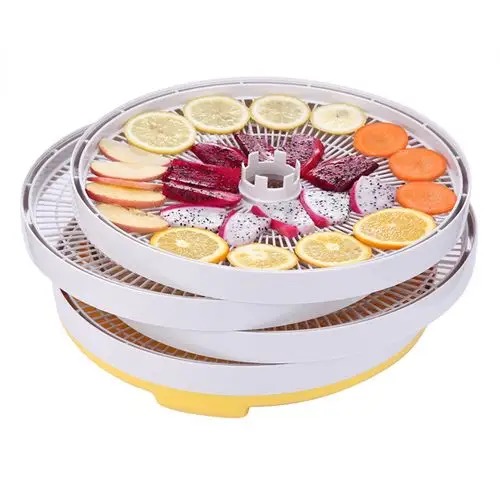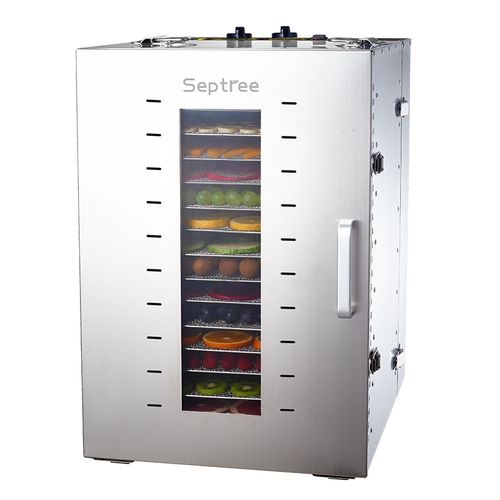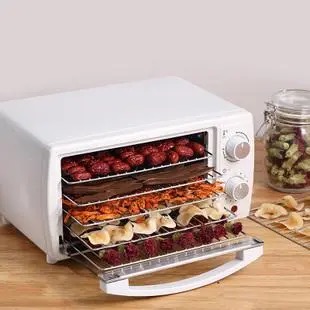
Content Menu
● What is a Food Dehydrator?
● Benefits of Using a Food Dehydrator
● Types of Food Dehydrators
● How Each Type Works
● Comparing Condenser vs Heat Pump vs Vented Dryers
>> 1. Cost Analysis
>> 2. Energy Efficiency
>> 3. Performance and Drying Time
>> 4. Suitability for Different Applications
● Additional Considerations When Choosing a Food Dehydrator
>> Size and Capacity
>> Temperature Control
>> Noise Level
>> Ease of Cleaning
>> Durability and Warranty
● Conclusion
● Frequently Asked Questions (FAQs)
>> 1. What is the main difference between condenser and heat pump dryers?
>> 2. Are vented dryers suitable for home use?
>> 3. How much does it cost to run a heat pump dryer annually?
>> 4. Can I use a food dehydrator for all types of foods?
>> 5. What maintenance is required for these dehydrators?
Food dehydrators are essential appliances for preserving food, particularly in the context of a growing interest in healthy eating and sustainable food practices. In this article, we will explore the various types of food dehydrators, focusing on the differences between condenser, heat pump, and vented dryers. We will also discuss their costs, efficiency, and suitability for different applications. This comprehensive guide aims to provide valuable insights for manufacturers, wholesalers, and brands looking to optimize their food preservation processes.

What is a Food Dehydrator?
A food dehydrator is an appliance that removes moisture from food to inhibit the growth of bacteria, yeast, and mold, thereby extending its shelf life. The dehydration process involves applying low heat to the food while circulating air to remove moisture. This method retains most of the food's nutrients, flavors, and colors.
Benefits of Using a Food Dehydrator
Using a food dehydrator offers numerous benefits:
1. Nutritional Retention: Dehydration preserves vitamins and minerals better than other preservation methods like canning or freezing.
2. Flavor Concentration: Removing water concentrates flavors, making dried fruits and vegetables taste richer.
3. Versatility: You can dehydrate a wide range of foods, including fruits, vegetables, herbs, meats (for jerky), and even flowers for potpourri.
4. Cost-Effective: Buying bulk produce when it’s in season and dehydrating it can save money in the long run.
5. Sustainability: Dehydrating reduces food waste by allowing you to preserve excess produce.
Types of Food Dehydrators
There are several types of food dehydrators available in the market today:
1. Condenser Dryers: These use a fan to circulate warm air over the food, which then condenses moisture into a collection tank.
2. Heat Pump Dryers: These are more energy-efficient as they recycle hot air during the drying process.
3. Vented Dryers: These expel moist air outside through a vent, making them suitable for large-scale operations.

How Each Type Works
1. Condenser Dryers: In these models, warm air is circulated around the food. As moisture is released from the food, it cools down and condenses on a cold surface within the machine. This collected moisture is then drained away. This method is effective but can take longer than other methods.
2. Heat Pump Dryers: These work by using a heat pump to extract moisture from the air inside the dehydrator. The heat pump circulates warm air while removing moisture through condensation. This method is highly efficient because it uses less energy compared to traditional heating methods.
3. Vented Dryers: Vented dryers operate by drawing in air from the environment, heating it up, and then blowing it over the food. The moist air is expelled outside through a vent. This method can be very effective for large quantities of food but requires proper ventilation.
Comparing Condenser vs Heat Pump vs Vented Dryers
1. Cost Analysis
When considering the purchase of a food dehydrator, cost is a significant factor. Here’s a breakdown of the initial costs and operational expenses associated with each type:
| Type | Initial Cost Range | Annual Operating Cost |
| Condenser Dryer | $100 - $500 | Moderate |
| Heat Pump Dryer | $300 - $1,500 | Low |
| Vented Dryer | $50 - $300 | Moderate |
1. Condenser Dryers: While they are moderately priced, their running costs can be higher due to energy consumption.
2. Heat Pump Dryers: Although they come with a higher upfront cost, they offer significant savings in energy bills over time.
3. Vented Dryers: These are generally the most affordable option but may incur higher energy costs depending on usage.
2. Energy Efficiency
Energy efficiency is crucial for both economic and environmental reasons. Heat pump dryers stand out as the most energy-efficient option due to their ability to recycle heat. This results in lower energy consumption compared to condenser and vented dryers.
1. Heat Pump Dryer: Uses approximately 2 kWh per load.
2. Condenser Dryer: Uses around 5 kWh per load.
3. Vented Dryer: Typically consumes about 5 kWh per load.
3. Performance and Drying Time
The drying time can vary significantly among these types of dehydrators:
1. Vented Dryers: Offer the fastest drying times due to their direct expulsion of moist air.
2. Condenser Dryers: Provide moderate drying times but can take longer than vented models due to moisture collection processes.
3. Heat Pump Dryers: Generally have longer drying cycles because they operate at lower temperatures to save energy.
4. Suitability for Different Applications
Each type of dryer has its unique advantages depending on the intended use:
1. Condenser Dryers: Ideal for small to medium-sized operations where space is limited.
2. Heat Pump Dryers: Best suited for those looking to minimize energy costs while maintaining high-quality food preservation.
3. Vented Dryers: Suitable for larger operations with adequate ventilation systems.
Additional Considerations When Choosing a Food Dehydrator
When selecting a food dehydrator, consider these additional factors:
Size and Capacity
The size of your dehydrator should match your needs. If you're planning to dehydrate large batches of food regularly, opt for a model with greater capacity. Conversely, if you only plan on occasional use or have limited kitchen space, a smaller unit may suffice.
Temperature Control
Different foods require different temperatures for optimal dehydration. Look for models that offer adjustable temperature settings so you can customize your drying process based on what you're preserving.
Noise Level
Some dehydrators can be quite noisy during operation due to fans running continuously. If noise is a concern for you—especially if you plan to use it in living spaces—consider looking for quieter models or those specifically designed for low noise operation.
Ease of Cleaning
Dehydrators can accumulate residue from dried foods over time. Choose models with removable trays that are dishwasher safe or easy to clean by hand.
Durability and Warranty
Investing in a durable machine with a good warranty can save you money in the long run. Look for reputable brands that offer solid warranties as an indication of quality.
Conclusion
In summary, choosing the right type of food dehydrator involves considering initial costs, energy efficiency, performance, and specific application needs. Heat pump dryers offer long-term savings and sustainability benefits despite their higher upfront cost. Conversely, vented dryers may be more suitable for larger operations where quick drying is essential.Overall, understanding these differences will enable manufacturers and wholesalers to make informed decisions when selecting equipment that best fits their operational needs while maximizing efficiency and product quality.

Frequently Asked Questions (FAQs)
1. What is the main difference between condenser and heat pump dryers?
The main difference lies in energy consumption; heat pump dryers recycle hot air and are more energy-efficient compared to condenser dryers which require more electricity to operate.
2. Are vented dryers suitable for home use?
Yes, vented dryers can be used at home but require proper ventilation to expel moist air outside effectively.
3. How much does it cost to run a heat pump dryer annually?
On average, running a heat pump dryer can cost around $88 per year based on typical usage patterns.
4. Can I use a food dehydrator for all types of foods?
Most food dehydrators can handle various foods including fruits, vegetables, herbs, and meats (for jerky); however, it's essential to follow specific guidelines for each type.
5. What maintenance is required for these dehydrators?
Regular cleaning of filters and water containers (for condenser dryers) is necessary. Heat pump dryers may require less frequent maintenance due to their efficient design.












